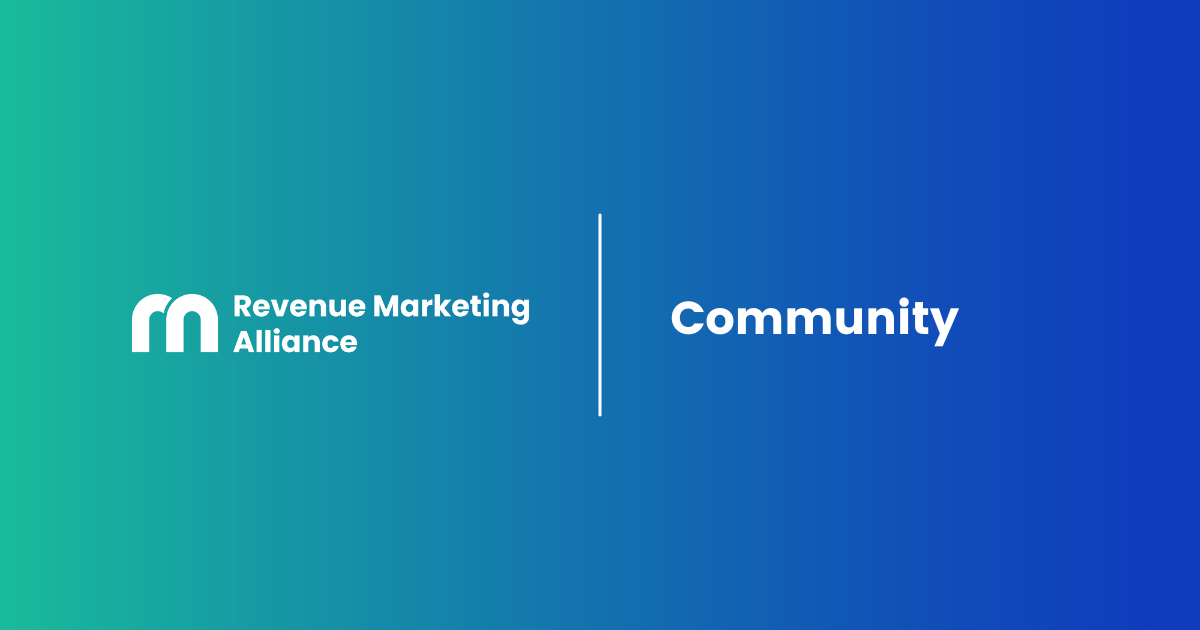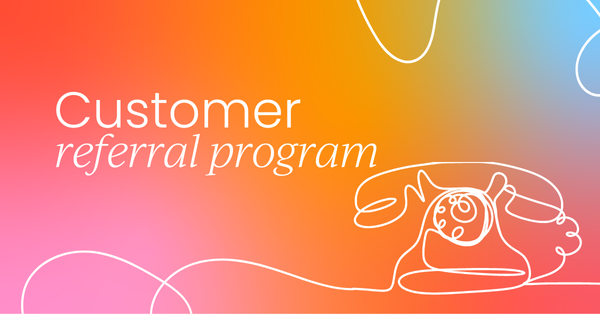If you knew you’d be getting a “bonus for every five customer referrals”, would that motivate you? Probably, right? The same will be true for your consumer base – if your buyers know they’ll receive a monetary reward or exclusive access to a product or service, they’re more likely to want to participate in your referral program.
It’s a win-win.
You know that customer referrals can drive organizational growth, so you’re aware of their importance – but how are these programs built? How can you make the most of customer referrals?
The value and impact of customer referral programs
Referral programs are a powerful marketing tool that can significantly impact a business's growth, customer acquisition, and overall profitability.
For instance, they can lower customer acquisition costs. This is because referrals come from existing customers who are already familiar with your brand, so the cost to acquire a new customer through referrals tends to be lower.
Referrals also have high conversion rates due to this. People are more likely to make a purchase if referred to by friends or family – in fact, according to Nielsen research, 84% of people see recommendations from friends and family as the most trustworthy.
The lifetime value of a referred customer is, at least, 16% higher compared to a non-referred customer as well, and they also have a higher retention rate. They’re more likely to remain loyal because they trust the recommendation of their referrer.
Speaking of loyalty, getting good value is the main reason (53%) customers choose a business over another. 30% of people do it because they like the benefits and rewards they get, be it discounts or special offers. So, by offering rewards for referrals, you can incentivize customers to stay engaged with your brand.
Referral programs can help you to scale your business, too, since they can lead to viral loops – a.k.a., self-perpetuating cycles where customers actively refer new customers, creating exponential growth.
Types of referral programs
Referral programs come in various shapes, each designed to suit different business models and customer behaviors. Here are just three of the most common ones:
Direct referral programs
This is, perhaps, the most straightforward type of referral program. It’s when an existing customer refers someone they know and receives a reward if the referral leads to a successful action – which can be anything from a purchase to a sign-up to a service.
Tiered referrals also belong to this category, as the more people customers refer, the greater their rewards.
You’ll find this type of program everywhere, including at Uber. When an existing user referred a new user to sign up to Uber and took their first ride, both referrer and referee received ride credits.
Milestone-based referral programs
This strategy refers to existing customers earning rewards based on achieving specific milestones related to the number of successful referrals they make. Instead of getting a reward for each referral, they have thresholds to meet.
For example, imagine you’re trying to set up one of these programs. You can offer:
- Milestone 1: 5 successful referrals means a $10 discount.
- Milestone 2: 10 successful referrals equals a $25 discount.
- Milestone 3: With 20 successful referrals, customers get a free product.
Dropbox is a great example of a company that used this tactic, offering additional storage to customers depending on how many people they referred to their services.
Influencer referral programs
This is when you partner with influencers who refer their followers to your business. These types of programs often give the influencer a unique referral code they can share, after which they receive a commission or fixed reward for each referral.
HelloFresh did this. The brand collaborated with influencers across many platforms, from YouTube to Instagram, to promote their meal kit delivery service. Influencers had a link PR code they shared with their followers and influencers earned a commission on new customers who signed up for HelloFresh using that code or link. Followers also received a big discount on their first order.
Identifying your happiest customers and advocates
But how can you identify which customers can help you grow your business by referring you to other people? Before you build your program, first you must spot your happiest customers:
Analyze customer feedback
You can do this with a Net Promoter Score (NPS) survey to measure customer satisfaction, in which scores of 9 and 10 refer to your happiest customers and potential advocates.
You can also review testimonials and ratings from customers, looking for the most positioning and detailed reviews.
Customer Satisfaction (CSAT) Surveys can also tell you which customers are the most satisfied and interested in promoting your brand.
Monitor social media mentions
Use social listening tools to track mentions of your brand on social channels. Look for customers who consistently speak positively about your brand or share their experiences online.
Identify people who engage with your content on social media, since these are often your most enthusiastic supporters.
Find out which customers are creating and sharing content about your brand or products as well, since this is great organic promotion.
Identify repeat customers
Analyze your sales data to find customers who buy frequently from you, since that usually means they’re happy and loyal.
If you have a loyalty program, you can identify who actively participates and redeem rewards.
Use data analytics tools
Customer segmentation is crucial. Use tools like Google Analytics to segment your customers by engagement, satisfaction levels, purchase behavior, etc. You can also analyze churn to see who’s loyal to your brand and who’s at risk of churning.
Leverage your community
Engage with your customers in online communities (such as Slack) and forums, and look for active participants who share advice, tips, and positive experiences related to your business.
Consider forming a customer advisory board that can provide valuable feedback and act as brand ambassadors.
Develop incentives that motivate referrals
When building out your customer referral program, you must offer the right incentives. After all, without them, how can you motivate existing customers to refer your business or product to people they know?
Simple – you have to make sure the incentives are appealing enough to encourage action.
Know your audience
Again, customer segmentation and feedback are pivotal when creating a referral program, as different segments will respond better to different types of incentives.
Look to the past too – what’s previously motivated your customers? If you have a great track record with discount codes leading to higher engagement levels, why not consider using that as part of your referral program?

Choose the right incentive
There are many different rewards you can choose from, which is why it’s so important to know your audience and what they’d like to receive.
For instance:
- Discounts and coupons
- Cash rewards
- Exclusive products and services
- Loyalty points
Consider two-sided rewards
What can you do to push potential new customers into signing up to your business or making a purchase? Make sure they’re also getting rewarded.
To motivate both referrer and referred, offer incentives to both – for example, you could get a discount on your next purchase and the person you refer might get a discount on their first order.
Both incentives need to be equally attractive.
Create tiered rewards
Escalating rewards can be a great way to encourage referrals. A customer might receive a small reward for one referral and a larger incentive for their fifth.
Make rewards immediate
Instant gratification is a thing. So, offer instant rewards for referrals to tap into that desire. For example, provide a discount code an existing customer can use right away as soon as their friend buys your product.
Communicate the value clearly
This step is crucial because people need to know what they gain from participating in your referral program. Highlight the simplicity and benefits of it, and ensure terms and conditions are easy to understand. Complicated rules might make people hesitate to participate.
Personalize incentives
Why not allow customers to choose their reward from a selection of options? This personalization can make the incentive more appealing because it aligns with individual preferences.
Promote scarcity
FOMO (fear of missing out) is also a real thing, so experiment with limited-time offers to create a sense of urgency, as well as exclusive access to rewards, which can make your incentives feel more valuable.
How does gamification fit in referral programs?
“‘Gamification’ – defined as the use of game-like elements in non-gaming environments – has been used with varying success. Points, badges, and leaderboards can prove effective, but only if they scratch the user’s itch. When there is a mismatch between the customer’s problem and the company’s assumed solution, no amount of gamification will help spur engagement.” – Nir Eyal, Hooked: How to Build Habit-Forming Products
Gamification is a powerful tool you can find everywhere, from video games to referral programs. And there's a good reason for that. Incorporating game-like elements helps to entice, engage, and motivate participants.
This, in turn, can lead to greater participation, a boost in referral rates, and higher loyalty rates.
You can add elements of competition by introducing leaderboards that rank participants based on how many referrals they make, and run challenges and competitions, where winners receive special rewards.
You can also award achievements and badges for reaching certain milestones, which people can share on socials, adding a sense of accomplishment. Tiered rewards where customers unlock increasingly better rewards can work well too, since they offer a sense of progression and spur them to reach higher levels (much like leveling-up in a game).
Use progress bars or other visual indicators to show people how close they are to unlocking rewards or reaching higher tiers as well, which motivates them to continue.
Set up your referral program infrastructure
These simple steps bring up everything we mentioned in this article together to help you set up your very own referral program:
- Define your goals and objectives: What are you looking to achieve with your program? Are you looking for customer acquisition or brand awareness? Set clear, measurable goals like number of referrals and conversion rates.
- Choose the right type of referral program: Based on your business and audience, make sure you pick the right program that aligns with your goals.
- Select the referral platform: Choose a referral software that fits your business requirements; these platforms should offer customizable referral links, tracking, reward distribution, and analytics. You may have to get a platform custom-built if your needs are highly specific.
- Design the infrastructure: Which rewards will you offer? Gift cards, cash, discounts? Make sure you’re also defining how the referral process will work, and don’t forget to outline the eligibility criteria either.
- Develop a seamless experience: Your referral program needs to be intuitive and have clear instructions. Create dedicated landing pages that explain everything and highlight the benefits of participating in it. Clear calls-to-action are crucial. Nearly 96% of people online use a mobile device to connect to the internet, so make your program mobile-friendly.
- Integrate tracking and analytics: Monitor referral activity, from clicks and sign-ups to purchases and reward fulfillment.
- Plan incentive distribution: Set up automated systems for distributing rewards once a referral is completed.
- Monitor, optimize, and scale: Keep up with the performance of your program, and understand what’s working and what could be better. Optimize the program where you can (using data to inform your decisions) and look for opportunities to scale it.
Examples of widely successful referral programs
Dropbox
While Dropbox wasn’t the first to create a successful referral program, it’s now regarded as the example to follow. But how did a tech company specializing in cloud storage and file sharing – with plenty of competition to boot – achieve growth of 3,900% in just 15 months?
You won’t be surprised to hear they did it with a really powerful customer referral program.
Dropbox offered both the referrer and the referred additional free storage space. Specifically, users could earn 500 MB of extra space for each referral up to a maximum of 16 GB. This incentive where both parties stood to gain helped create a cycle where existing and new users were motivated to advocate for the company.
Dropbox also made their referral program part of:
- Their onboarding process so visibility of the program was high.
- Product features, including in-app prompts where users could access and share their unique referral links (making it very convenient and easy).
- Their emails, which encouraged users to refer more friends to earn additional storage.
All of this led to a 3,900% growth – the program launched in 2008 and garnered 100,000 registered users. By 2010, Dropbox had 4 million users.
Today, they have over 700 million users and generate 2.5 billion USD in annual revenue.
Morning Brew
Morning Brew, a daily business newsletter, also set up a referral program to massively grow its subscriber base. This program was gamified, offering escalating rewards based on the number of referrals someone had.
The program was very simple:
“At the bottom of each Morning Brew newsletter, you will find your custom referral code and referral hub. The code is what you send to everyone you know and convince them to sign up for Brew, and your referral hub is where you can track your progress and rewards.”
In 2020, 35% of Morning Brew’s subscriber total (2.4+ million subscribers at the time) came from these referrals.
The program was a milestone-based approach with tiered rewards, which created a strong incentive for subscribers to share the newsletter – leading to widespread word-of-mouth growth.
Morning Brew, which started in a dorm in 2015, was bought by Insider Inc. for 75 million USD in 2020.
Revolut
The financial tech company, which offers banking services, used referral programs to escalate its user base growth. These were (and are) mutually beneficial programs where both referrers and referees receive cash incentives.
Nikolay Storonsky launched Revolut in 2015 to put it “on the path to becoming the world’s first truly global bank, changing the way we do all things money”.
The program itself saw an existing user receive a unique referral link to share with friends and family. The new user then signed up through that link, verified their account, and made a qualifying transaction. Both the existing and new users received a cash reward.
Nowadays, their referral program looks like:
- The new user signs up to Revolut with the unique referral link.
- They have to verify their identity with Know Your Customer (KYC) checks.
- The new user must top up their account (it needs to be a transfer from another bank).
- They had to order a physical card (which may come with fees).
- They must make a number of card payments of the required minimum amount.
While it’s a fairly long and involved process, it seems to be working. Revolut grew rapidly across several countries and, by 2020, the company already had over 10 million users. They’ve recently received a valuation of $45 billion.
Join our Slack community to connect with like-minded revenue marketers from across the globe, learn and grow alongside your peers, ask questions, find job opportunities, etc.




 Follow us on LinkedIn
Follow us on LinkedIn



